Are you ready to meet the most captivating and enchanting canine companion you've ever encountered? Brace yourself, because the Huskydoodle is about to steal your heart.
This extraordinary crossbreed, a delightful blend of the Siberian Husky and Poodle, possesses a charm and appeal like no other. But that's just the beginning. As we uncover the mesmerizing information and characteristics of the Huskydoodle, you'll discover why this breed is unlike anything you've ever seen before.
From their unique size and coat variations to their intelligent temperament and exercise needs, the Huskydoodle is a breed that will leave you wanting to know more.
So, are you ready for an unforgettable journey into the world of the Huskydoodle?
Key Takeaways
- Huskydoodles are a crossbreed of Siberian Husky and Poodle, known for their friendly and intelligent temperament.
- They require at least 2 hours of daily exercise and regular grooming to prevent matting and tangling of their coat.
- Huskydoodles can adapt well to apartment living if they don't excessively bark and behave politely towards neighbors.
- When considering adoption or purchase, it is important to prioritize reputable breeders who prioritize the health and temperament of their dogs, and to consider the specific needs and characteristics of both parent breeds.
Origin and Crossbreeding
The Huskydoodle breed originated as a crossbreed between the Siberian Husky and the Poodle. This unique combination creates a dog with a mix of characteristics from both parent breeds.
The Siberian Husky brings its strength, endurance, and striking appearance to the mix, while the Poodle contributes its intelligence, hypoallergenic coat, and playful nature. The result is a hybrid breed that's known for being friendly, happy, and highly intelligent.
Despite not being officially recognized by major kennel clubs, the Huskydoodle has gained popularity for its loving temperament and beautiful coat. This crossbreed is a wonderful choice for those seeking a loyal and affectionate companion that's also highly trainable.
Size and Weight Range
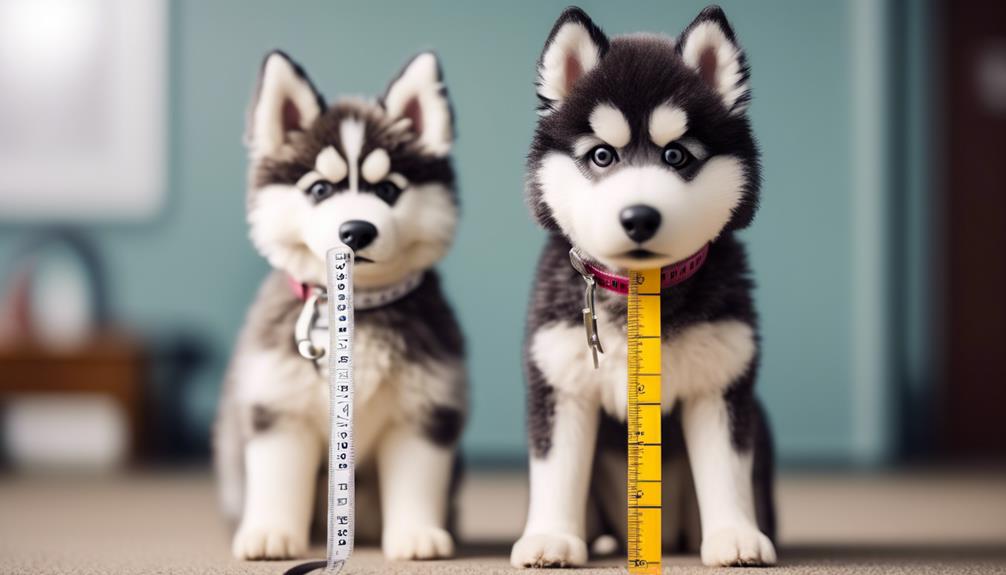
With an average height of 20 inches for males and 19 inches for females, the Huskydoodle falls within a medium-sized range. This makes them a suitable choice for individuals or families looking for a dog that isn't too small or too large.
In terms of weight, males typically weigh between 45-60 pounds, while females generally weigh between 40-55 pounds. It's important to note that these are just average ranges, and individual Huskydoodles may fall outside of these numbers.
When considering the size and weight of a Huskydoodle, it's also essential to take into account their energy levels and exercise needs to ensure they receive the appropriate care and attention they require.
Breed Group and Recognition
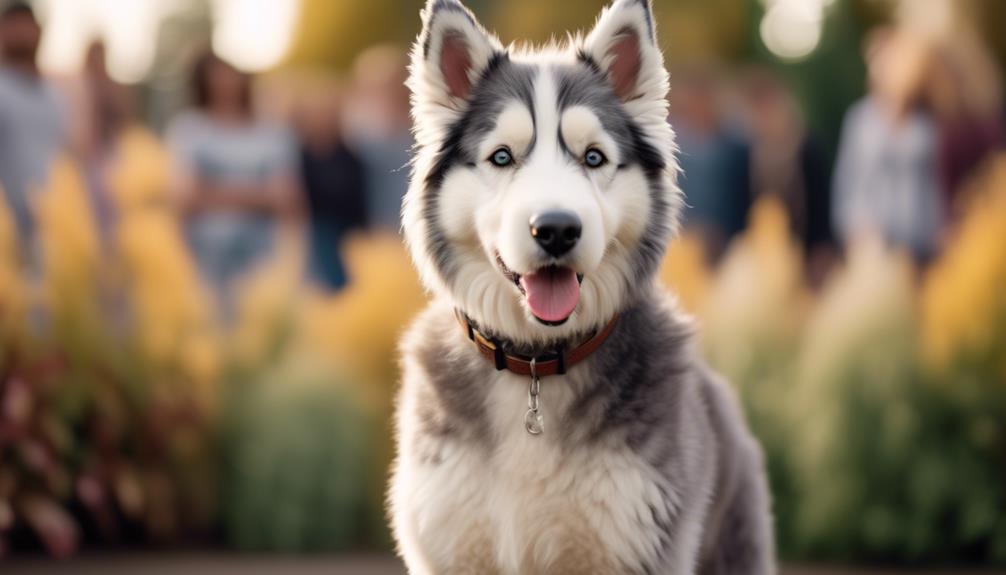
Huskydoodles belong to a breed group that isn't officially recognized by major kennel clubs. However, this doesn't diminish their unique qualities and characteristics. Here are some key points to understand about the breed group and recognition:
- Unofficial recognition: While Huskydoodles may not have official recognition, they're still a beloved and popular crossbreed.
- Mixed heritage: Huskydoodles are a crossbreed of Siberian Husky and Poodle, resulting in a unique combination of traits.
- Individual variation: Due to their mixed heritage, Huskydoodles can vary in appearance and temperament, making each dog unique.
- Growing popularity: Despite not being recognized by major kennel clubs, Huskydoodles continue to gain popularity as loving family pets and companions.
Although Huskydoodles may not have official recognition, their popularity and unique qualities make them a cherished breed among dog lovers.
Lifespan and Health Concerns
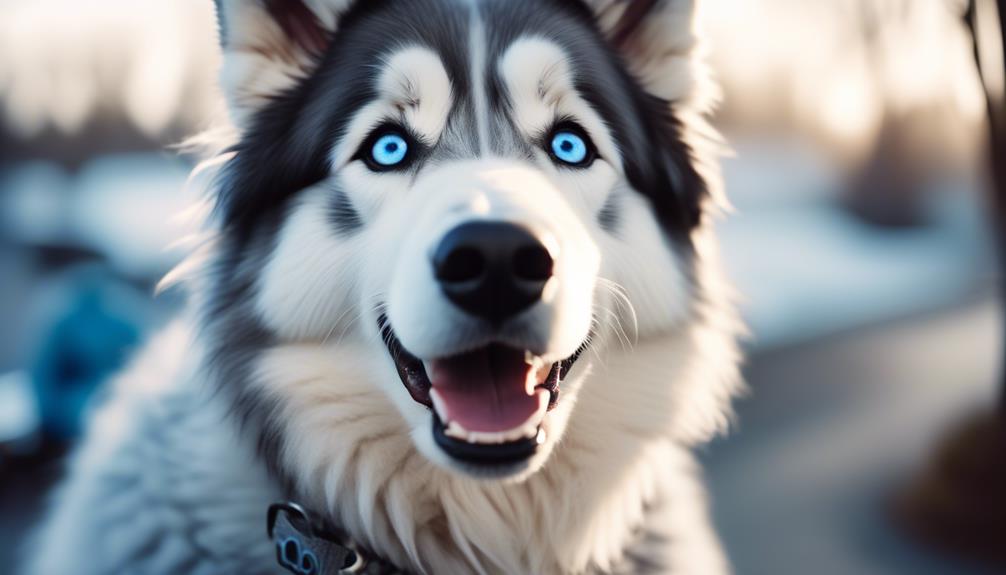
On average, Huskydoodles have a lifespan of 10-13 years and may experience certain health concerns. While they're generally healthy, there are a few conditions that they may be prone to.
One common health concern is hip dysplasia, which is a condition where the hip joint doesn't develop properly. This can lead to pain and difficulty in movement.
Another concern is elbow dysplasia, which affects the elbow joint and can cause lameness.
Huskydoodles may also be prone to ear infections, so regular cleaning and maintenance of the ears is important.
Additionally, they may be at risk for eye problems such as cataracts or progressive retinal atrophy.
Regular check-ups with a veterinarian can help identify and manage any potential health issues to ensure a long and happy life for your Huskydoodle.
Coat and Color Variations
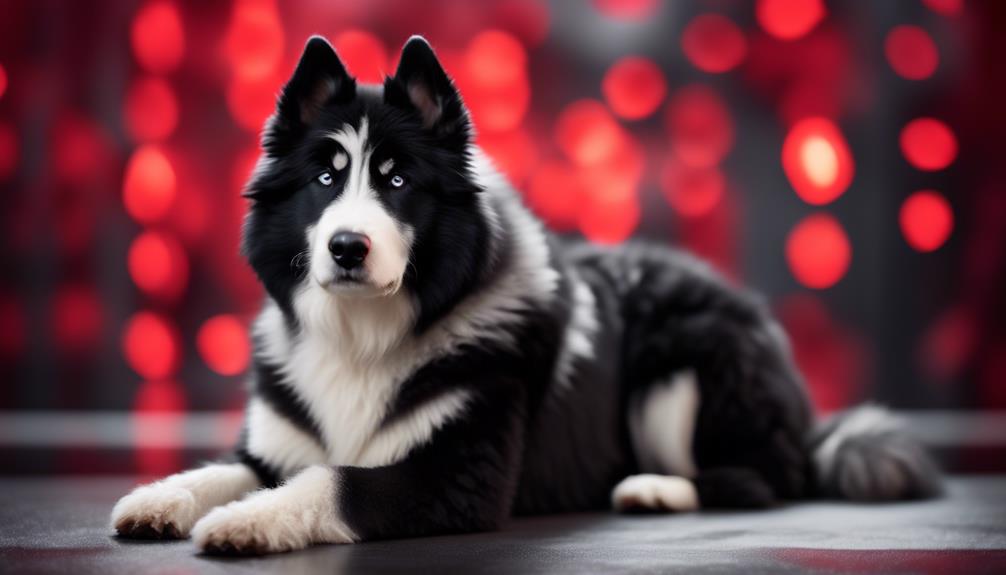
The coat of a Huskydoodle comes in various colors, including black, gray, white, tan, and combinations. Here are some coat and color variations to consider:
- Solid Colors: Huskydoodles can have a solid black, gray, white, or tan coat. These solid colors can range from light to dark shades, adding to the uniqueness of each individual dog.
- Bi-color Combinations: Some Huskydoodles have a coat that combines two colors, such as black and white, gray and white, or tan and white. These combinations create a striking and eye-catching appearance.
- Tri-color Combinations: Other Huskydoodles may have a coat that combines three colors, such as black, gray, and white, or tan, white, and black. These tri-color combinations add even more complexity and visual interest to their appearance.
- Merle Patterns: Huskydoodles with merle patterns have a base color with patches or spots of a different color. This creates a beautiful and unique coat pattern that can be mesmerizing to look at.
No matter the color or pattern, the coat of a Huskydoodle is sure to be a standout feature that adds to their overall charm and appeal.
Temperament and Training
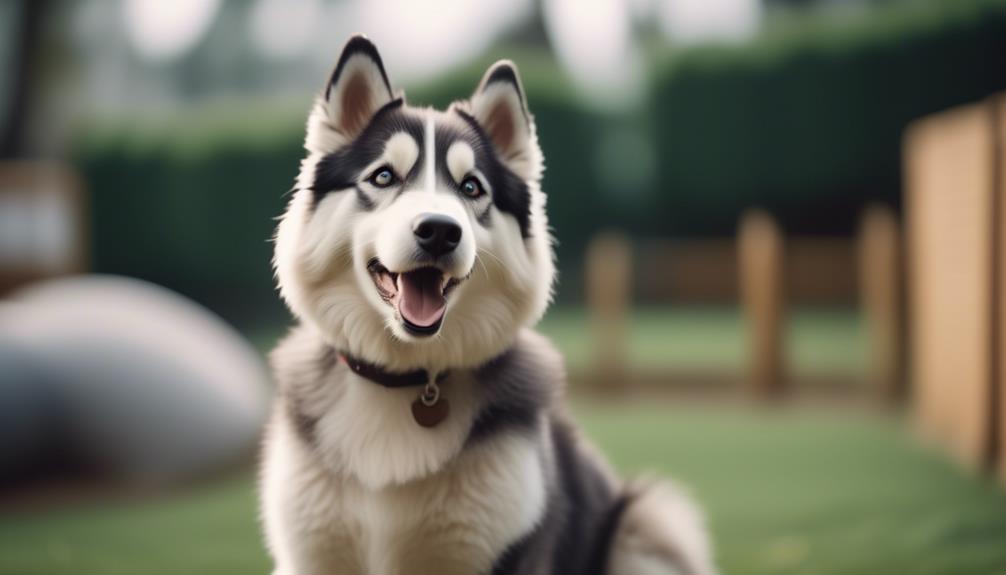
When considering the temperament and training of a Huskydoodle, it's important to understand their unique characteristics and needs.
Huskydoodles are known for being friendly, happy, and intelligent dogs. However, they can also be stubborn and independent at times.
Training a Huskydoodle requires patience and positive reinforcement. They're moderately easy to train, but consistency and firmness are key. It's important to establish yourself as the pack leader and provide them with mental stimulation to prevent boredom.
Huskydoodles thrive with daily exercise, as they've high energy levels. They enjoy activities such as walking, running, and playing fetch.
Socialization is also crucial for their development. Exposing them to different people, animals, and environments will help them become well-rounded and confident dogs.
Exercise Needs and Daily Routine
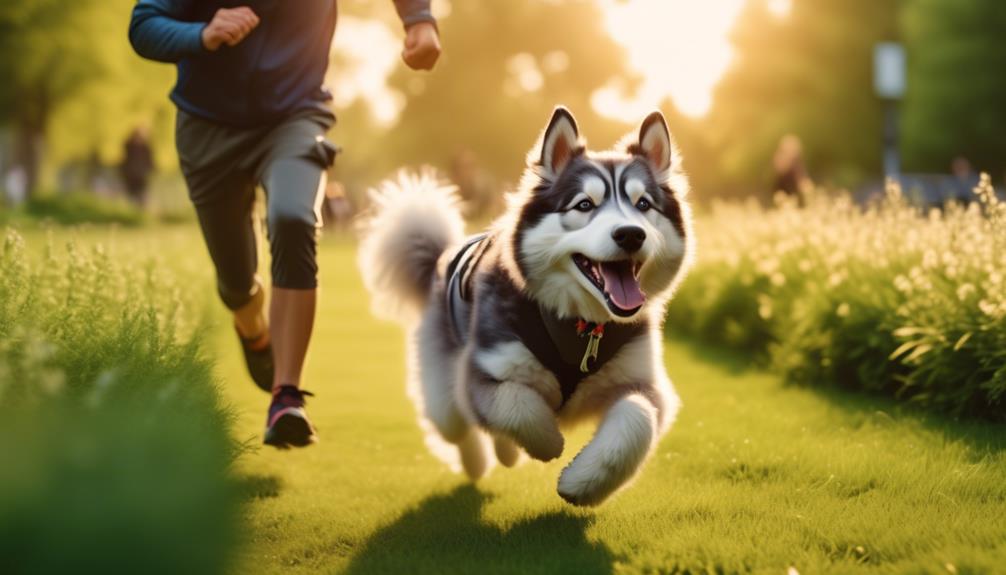
To meet the exercise needs and establish a daily routine for your Huskydoodle, it's important to provide them with regular physical activity and mental stimulation. Here are some key points to consider:
- Daily Exercise: Huskydoodles require at least 2 hours of exercise every day to keep them mentally and physically stimulated.
- Physical Activities: Engage in activities like long walks, jogging, hiking, and interactive play sessions to meet their exercise requirements.
- Mental Stimulation: Incorporate puzzle toys, obedience training, and interactive games to challenge their intelligent minds.
- Consistency: Establish a consistent daily routine for exercise and playtime to keep your Huskydoodle happy and well-behaved.
Grooming, Adaptability, and Sensitivity
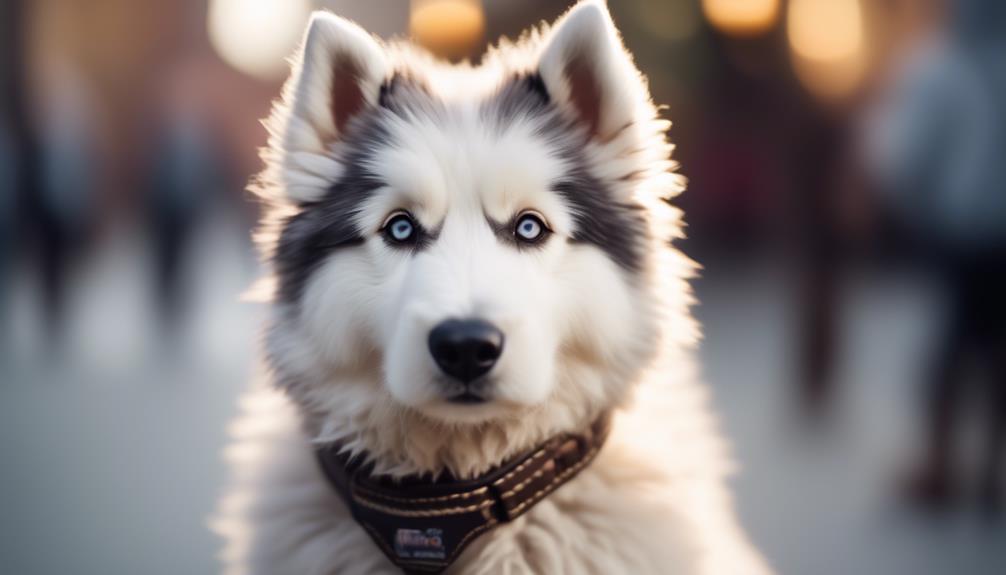
Regular grooming is essential for maintaining the coat of a Huskydoodle and ensuring their adaptability and sensitivity to different environments. The Huskydoodle has a short, curly or wavy coat that comes in various colors. To help you understand the grooming needs of a Huskydoodle, here is a table outlining the grooming requirements:
| Grooming Needs | Frequency | Description |
|---|---|---|
| Brushing | 2-3 times a week | Regular brushing is necessary to prevent matting and tangling of the coat. Use a slicker brush or a comb to remove loose hair and keep the coat looking neat and healthy. |
| Bathing | Every 6-8 weeks | Bathing should be done as needed to keep the coat clean and free from dirt and odors. Use a gentle dog shampoo and conditioner to maintain the coat's natural oils. |
| Nail trimming | Every 2-3 weeks | Regular nail trimming is important to prevent overgrowth and discomfort. Use a dog nail clipper or grinder to trim the nails to an appropriate length. |
| Ear cleaning | Weekly | Clean the ears regularly to prevent wax buildup and infection. Use a dog-friendly ear cleaner and cotton balls to gently clean the outer part of the ears. |
| Teeth brushing | Daily | Brushing your Huskydoodle's teeth daily helps to prevent dental issues such as tartar buildup and gum disease. Use a dog toothbrush and toothpaste to keep their teeth clean and healthy. |
Considerations for Adoption or Purchase
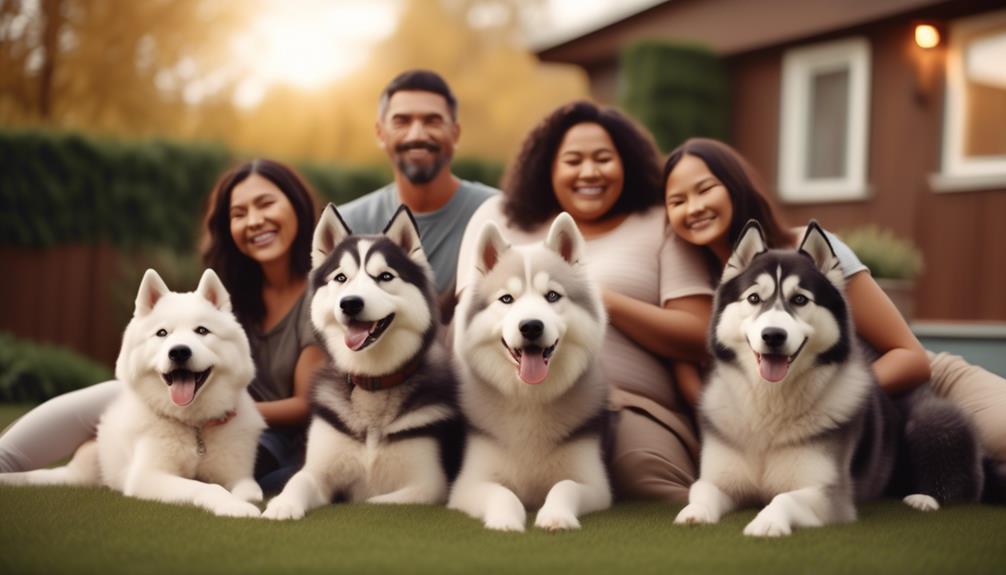
Now let's turn our attention to the important considerations when it comes to adopting or purchasing a Huskydoodle.
- Adoption: Prioritize adopting from rescue organizations or shelters to provide a loving home to a dog in need.
- Reputable Breeders: Choose a reputable breeder who prioritizes the health and temperament of their dogs, conducts necessary health screenings, and provides a nurturing environment for the puppies.
- Ethical Practices: Thoroughly research breeders to ensure they follow ethical practices and discourage unethical breeding.
- Health and Happiness: Active approach in choosing a breeder ensures bringing home a healthy and happy Huskydoodle pup.
Considering these factors will help you make an informed decision and find a Huskydoodle that will be a perfect fit for your family and lifestyle.
Frequently Asked Questions
Are Huskydoodles Hypoallergenic?
No, Huskydoodles are not hypoallergenic. Their coat can still trigger allergies in some people. If you have allergies, it's important to spend time with a Huskydoodle to see if you have any reactions.
Can Huskydoodles Live in Hot Climates?
Yes, Huskydoodles may struggle in hot climates due to their thick coat. It's important to provide them with shade, water, and appropriate cooling methods to ensure their comfort and prevent overheating.
Do Huskydoodles Shed a Lot?
Yes, Huskydoodles do shed, but the amount can vary. Regular brushing helps manage shedding. Their coat is typically short, curly or wavy, so grooming is important to prevent matting and tangling.
Are Huskydoodles Good With Children?
Huskydoodles are generally good with children. They are friendly and playful, making them great companions for kids. However, as with any dog, it's important to supervise interactions and teach children how to properly interact with and respect dogs.
Can Huskydoodles Be Left Alone for Long Periods of Time?
Yes, Huskydoodles can be left alone for long periods of time if properly trained. However, it's important to provide them with mental stimulation and exercise before leaving to prevent boredom and destructive behavior.
What are the similarities and differences between Huskydoodle and Goldendoodle breeds?
The goldendoodle dog characteristics information reveals that both Huskydoodles and Goldendoodles are friendly, affectionate, and intelligent. However, Huskydoodles have a more independent nature and require more exercise, while Goldendoodles are known for their gentle and easy-going temperament. Additionally, both breeds are hypoallergenic and have minimal shedding.
Conclusion
In conclusion, the Huskydoodle is a unique and lovable breed that combines the traits of the Siberian Husky and Poodle. With its intelligence, friendliness, and independent nature, the Huskydoodle is a great companion for both first-time owners and experienced enthusiasts.
Understanding its characteristics, size, coat, and exercise needs will help ensure a harmonious match with your lifestyle. Whether you choose to adopt or purchase, finding a reputable breeder and considering ethical practices is essential.
Consider adding a Huskydoodle to your life and enjoy the joys of this delightful breed!




